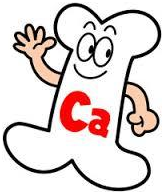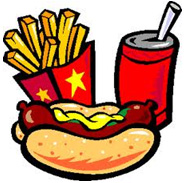What Calcium Does
During childhood and adolescence, the body uses the mineral calcium to build strong bones — a process that’s all but complete by the end of the teen years. Bone calcium begins to decrease in young adulthood and progressive loss of bone occurs as we age, particularly in women.
Teens, especially girls, whose diets don’t provide the nutrients to build bones to their maximum potential are at greater risk of developing the bone disease osteoporosis, which increases the risk of fractures from weakened bones.
Younger kids and babies who don’t get enough calcium and vitamin D (which aids in calcium absorption) are at increased risk for rickets. Rickets is a bone-softening disease that causes severe bowing of the legs, poor growth, and sometimes muscle pain and weakness.
Calcium also plays an important part in making sure that muscles and nerves work properly, and in the release of hormones and enzymes. So if blood calcium levels are low, the body takes calcium from the bones to help these functions.
Good Sources of Calcium
Of course, milk and other dairy products are good sources of calcium, and most contain added vitamin D, which is also important for bone health.
But don’t overlook other healthy calcium-fortified foods, including orange juice, soy products, and bread. Here are some dairy and nondairy products that provide quite a bit of this vital nutrient:
| Serving Size | Food or Beverage | Calcium |
| 8 ounces (237 milliliters) | milk | 300 milligrams |
| 8 ounces (237 milliliters) | calcium-fortified orange juice | 300 milligrams |
| 2 ounces (57 grams) | American cheese | 300 milligrams |
| 1½ ounces (43 grams) | cheddar cheese | 300 milligrams |
| 4 ounces (113 grams) | tofu fortified with calcium | 260 milligrams |
| 6 ounces (177 milliliters) | yogurt | 225 milligrams |
| ½ cup (118 milliliters) | collard greens (cooked from frozen) | 178 milligrams |
| 4 ounces (113 grams) | ice cream, soft serve | 120 milligrams |
| ½ cup (118 milliliters) | white beans | 110 milligrams |
| 1 ounce (28 grams) | almonds | 80 milligrams |
| ½ cup (118 milliliters) | bok choy | 80 milligrams |
| ½ cup (118 milliliters) | rhubarb, cooked | 75 milligrams |
| 4 ounces (113 grams) | cottage cheese | 70 milligrams |
| ½ cup (118 milliliters) | red beans | 40 milligrams |
| ½ cup (118 milliliters) | broccoli, cooked | 35 milligrams |







